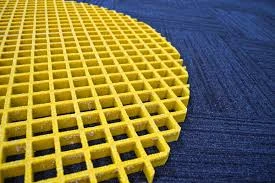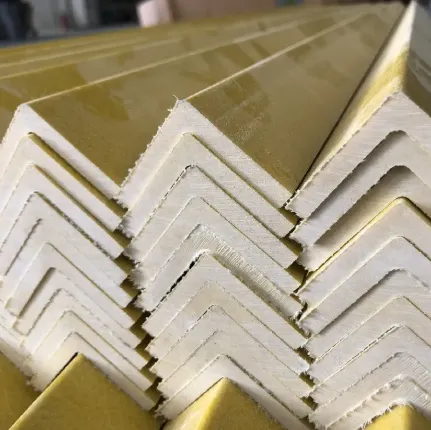loading...
- No. 9, Xingyuan South Street, Dongwaihuan Road, Zaoqiang County, Hengshui, Hebei, China
- admin@zjcomposites.com
- +86 15097380338
- Welcome to visit our website!
Anti Slip Stair Treads for Safety Durable Anti Slip Treads & Stair Nosing Solutions
- Introduction to anti slip stair treads
and the importance of stair safety - Understanding the technical advantages of anti slip treads
- Manufacturer comparison: Quality, performance, and pricing
- Customizable solutions for unique staircase designs and needs
- Real-world case studies demonstrating increased safety and ROI
- Installation, maintenance tips, and long-term benefits
- Conclusion: Anti slip stair treads as a smart investment for safety

(anti slip stair treads)
Introduction: Anti Slip Stair Treads and Stair Safety
Slips and falls on stairs account for a significant portion of workplace and home injuries globally. According to the National Safety Council, stairs are involved in over one million injuries every year in the United States alone. Anti slip stair treads have become an essential safety solution designed to mitigate these risks by improving traction on various types of staircases. Engineered for both residential and commercial environments, these products offer a simple yet effective upgrade that enhances not only safety but also the durability and aesthetics of your stairs. The increased awareness about accident prevention, combined with stricter building codes, drives the demand for reliable anti slip tread and anti slip stair nosing technologies worldwide.
Technical Advantages of Anti Slip Treads
Modern anti slip stair treads are the result of advanced material engineering. They typically incorporate abrasive particles, such as silicon carbide or aluminum oxide, which are optimized to provide high levels of grip even in wet or oily conditions. For example, laboratory tests demonstrate that quality anti slip treads can increase the coefficient of friction of a stair surface from a baseline of 0.4 (bare concrete) up to 0.9, creating a robust anti-skid environment. Many variants also feature corrosion-resistant backing—such as anodized aluminum or fibreglass-reinforced resin—making them suitable for both indoor and outdoor use.
Furthermore, the innovative designs available, including luminous edges and tactile indicators, facilitate compliance with the requirements of international standards such as ADA and ASTM E303. The performance metrics are measurable: for instance, slip resistance (measured as PTV, Pendulum Test Value) can consistently exceed the recommended safe threshold (PTV > 36). Combined with extended lifespan ratings—some products remain effective for over 10 years with minimal maintenance—these technical advantages ensure safety without compromising on aesthetics or functionality.
Comparative Analysis: Manufacturers, Specs, and Cost
As the demand for reliable safety solutions intensifies, a variety of manufacturers compete to deliver top-tier anti slip stair treads and stair nosing. Below is a comparative table highlighting the crucial aspects of leading brands, with a focus on slip resistance, durability, warranty, and price per meter.
| Manufacturer | Slip Resistance (PTV) | Material Base | Warranty | Lifespan (Years) | Customization | Price per Meter (USD) |
|---|---|---|---|---|---|---|
| GripMaster Pro | 40-50 | Aluminum + Carbide | 7 years | 10 | Fully customizable | 18 |
| StairSafe Solutions | 38-45 | Fiberglass Resin | 5 years | 8 | Color, size options | 15 |
| SecureTread | 37-43 | PVC Composite | 3 years | 6 | Standard sizes | 10 |
| UrbanStep Industrial | 45-52 | Anodized Aluminum | 10 years | 12 | Logo/text | 22 |
As illustrated, the breadth of options allows for a tailored approach to any project budget or specification. Higher-end models offer advanced customization, durability, and high slip resistance, ideal for critical safety environments such as hospitals, schools, and transit hubs. Mid-range and economy products still meet regulatory standards for routine commercial or residential needs.
Tailored Solutions for Unique Staircase Requirements
No two staircases are the same, especially in modern architectural settings. Custom anti slip stair treads accommodate a wide range of needs—from unique measurements and curved layouts to specific color branding and enhanced visibility for visually impaired users. Many manufacturers now offer tailored solutions, including:
- On-site measurement and template production
- Custom colors and insert materials for design integration
- Options for luminance (photoluminescent edges) for emergency egress
- Textile, tactile, or logo integration for accessibility enhancement
Proven Performance: Real-World Application Examples
The implementation of anti slip treads and stair nosing has resulted in significant measurable benefits for numerous organizations globally.
- Healthcare Facilities: A major regional hospital reduced annual stair accidents by 60% after retrofitting all staircases with fibreglass anti slip treads. Maintenance costs also fell by 30% due to lower cleaning requirements and longer replacement cycles.
- Educational Institutions: A university campus with more than 24 buildings registered zero student incidents related to stair slips over a three-year period post-installation.
- Transit Authorities: A metropolitan subway system experienced an 80% reduction in passenger incidents after upgrading all public-access stairways with heavy-duty anti slip stair nosing.
- Commercial Buildings: An office tower reported significant insurance premium reductions after meeting international slip resistance standards through the deployment of aluminum anti slip stair treads.
These case studies highlight not only the direct safety improvements but also the indirect financial benefits, from reduced liabilities to enhanced facility reputation and compliance.
Best Practices for Installation, Maintenance, and Longevity
Efficient installation and regular upkeep are critical for maximizing the return on investment in anti slip stair treads. Manufacturers recommend:
- Substrate Preparation: Ensure stair surfaces are dry, clean, and structurally sound. Use appropriate adhesives or mechanical fastenings for the tread type.
- Routine Inspection: Schedule safety checks every 6-12 months, inspecting for wear or lifting edges.
- Cleaning Procedures: Most anti slip treads require only simple cleaning with non-abrasive agents and soft brushes, reducing labor costs.
- Refurbishment: Opt for replaceable designs that allow new inserts to be retrofitted cost-effectively when necessary.
Conclusion: Anti Slip Stair Treads as a Safety Investment
With the compelling data on accident reduction, extended product life, and financial incentives, selecting the right anti slip stair treads or anti slip stair nosing proves to be a high-value investment for both public and private sector properties. Advances in materials and customization make it possible to address safety, compliance, and design aesthetics in a single solution. Whether you are a facility manager, architect, or safety officer, these products deliver quantifiable improvements for the safety of every step. Embrace the move toward a safer and more resilient environment with best-in-class anti slip treads tailored to your requirements.

(anti slip stair treads)
FAQS on anti slip stair treads
Q: What are anti slip stair treads?
A: Anti slip stair treads are safety products installed on stairs to prevent slipping and accidents. They provide extra grip and traction. Suitable for both indoor and outdoor staircases.Q: How do anti slip treads help improve stair safety?
A: Anti slip treads add a textured or abrasive surface to each step, reducing the risk of slips. They are especially helpful in wet or high-traffic areas. This significantly increases stair safety.Q: What is the difference between anti slip stair treads and anti slip stair nosing?
A: Anti slip stair treads cover the surface of each step, while stair nosing is placed on the edge. Both enhance grip, but nosing also protects stair edges from wear. Many installations use both for maximum safety.Q: Where should I install anti slip stair treads?
A: Install anti slip stair treads on any indoor or outdoor staircase prone to slippery conditions. Common areas include commercial buildings, homes, and public places. They are ideal for wood, concrete, and metal stairs.Q: Are anti slip stair treads easy to install?
A: Yes, most anti slip treads feature peel-and-stick or screw-down installations. You can usually install them without professional help. Always follow the manufacturer’s instructions for best results.-
GRP Structures: The Future of Lightweight, High-Performance EngineeringNewsJun.20,2025
-
FRP Water Tank: High-Performance Storage for Corrosive and Clean Water SystemsNewsJun.20,2025
-
FRP Square Tube: The New Industry Standard for Chemical and Structural ApplicationsNewsJun.20,2025
-
FRP Pultruded Profiles: The Ultimate Choice for Lightweight Structural StrengthNewsJun.20,2025
-
FRP Handrails: The Safer, Smarter, and Stronger Choice for Modern InfrastructureNewsJun.20,2025
-
FRP Grating: The Smart Solution for Durable, Lightweight Industrial FlooringNewsJun.20,2025
-
Why Choose a Galvanized Water Tank for Your Storage NeedsNewsMay.21,2025
